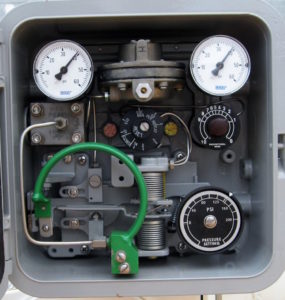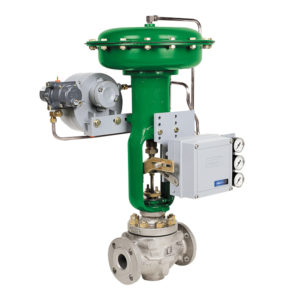 To keep a process running efficiently, the system that controls that process must also work efficiently. That means the control valve needs to respond quickly and accurately to any changes in the process variable. If it doesn’t, the equipment can fail, resulting in unexpected downtime.
To keep a process running efficiently, the system that controls that process must also work efficiently. That means the control valve needs to respond quickly and accurately to any changes in the process variable. If it doesn’t, the equipment can fail, resulting in unexpected downtime.
That’s exactly what Jerry Butz, Automation Service’s Director of Engineering and Technical Support, discovered during a recent project at an oil facility. Despite the fact that the facility was operating at a lower-than-desired pressure, the compressors kept overloading and shutting down. Butz and his team identified and fixed a couple of problems, but the most essential service they performed was to replace Proportional Only controllers with Proportional + Reset controllers. They also took the time to successfully tune the settings.
Many companies in oil and gas and other industries are currently looking for ways to increase their productivity and efficiency. In facilities that currently use Proportional Only control, switching to Proportional + Reset control can help move companies toward this goal by providing a more sophisticated response to changes in the process variable.
What controllers do
Controllers are in charge of keeping the process variable at setpoint by adjusting the position of the control valve. To do this, they follow a simple series of steps:
- They receive measurements about the process variable from a sensor.
- They compare the measurements to the setpoint.
- When a discrepancy, or error, between the measured variable and the setpoint occurs, they send a signal to the control valve to change its position.
- Repeat.
Proportional Only control
Proportional Only control is the most basic type of process control. The controller provides a base level of output (called the bias, or null value), which holds the process variable at setpoint in the absence of errors. (Think of this as like the steady pressure you need to apply to the gas pedal to keep your car going 65 mph on the highway.) When an error occurs, the controller sends a new output to the valve to cause it to change position. In Proportional Only control, that output is proportional (i.e., linear) to the input received from the sensors.
While Proportional Only controllers respond quickly to discrepancies between the measured variable and the setpoint, they have a disadvantage when it comes to accuracy. This is because the bias can only be reset manually by an operator.
Here’s why that matters:
Suppose that to maintain the setpoint pressure in a system, the control valve needs to be 60% open. That controller output that keeps the valve at 60% is the bias.
Now, imagine a disturbance causes the pressure to decrease. To increase the pressure, the controller adjusts the valve to 50% open. This does the trick and the pressure returns to its setpoint.
However, the bias is still set to the controller output required for the valve to hold at 60%. So the next time the controller needs to move the valve, the output it sends will be incorrect given the new steady state.
Because the bias can’t be adjusted on the fly, Proportional Only controllers can only provide accuracy within a range.
Proportional + Reset Control
Adding Reset control solves the accuracy problem by allowing controllers to automatically reset their bias to reflect current conditions.
In the example above, once the valve has closed to 50% and the pressure is back to setpoint, a Proportional + Reset controller would adjust its bias to the output required to hold the valve at 50%. Any further changes would then be calculated from this new null value.
What this all adds up to is that Proportional + Reset controllers allow you to dial in pressure control much more accurately than you can with Proportional Only controllers. Ultimately, this will help keep your plant running smoothly, which means higher productivity and less downtime.
If you’d like to read more technical information the different types of control, check out these sources:
- Control Guru: The P-Only Control Algorithm
- Odesie: Process Controls
You can also sign up for our newsletter on the right sidebar to receive a monthly roundup of content about process controls, remanufacturing, and much more.

